- H-23/ B Abul Fazal Enclave, New Delhi - 110025, INDIA
Call Us (Indian)
(+91 ) 7827791242
Call Us (International)
(+91 ) 7827791242
Email Us
info@globlaregenex.com
(+91 ) 7827791242
(+91 ) 7827791242
info@globlaregenex.com
Bursitis is a painful swelling of a small sac of fluid known as a bursa. Bursae cushion and lubricate areas where ligaments, tendons, muscles, skin, or bones rub against each other. People who are repeating the same movement again and again and who put continued pressure on a specific joint in their sports, jobs, or daily activities have a higher chance of getting bursitis
The bursae are detected next to the tendons near the large joints, like in the hip, elbow, knee, and shoulder. Common musculoskeletal issues include discomfort in the hips, elbows, knees, and shoulders. These complaints might be caused by accident, overuse, degenerative disorder, or underlying medical conditions.
Osteoarthritis, bursitis, tendinitis, hip labral tears, and fractures are common causes of hip discomfort. It may cause pain in the buttocks, outer thighs, groin, or even extend to the knee.
Tennis elbow (lateral epicondylitis), golfers elbow (medial epicondylitis), bursitis, arthritis, and nerve compression are among the disorders that are commonly linked with elbow pain. The usual first treatment includes rest, ice, physical therapy, and anti-inflammatory drugs. PRP treatment is also very effective. If the condition worsens, corticosteroid injections or surgery may be required.
Arthritis, bursitis, tendinitis, fractures, rotator cuff injuries, and shoulder impingement can all result in shoulder pain. PRP treatment, Rest, physical therapy, NSAIDs, corticosteroid injections, and, in extreme situations, surgery such as rotator cuff repair or shoulder replacement are common treatment modalities.
Despite the fact that bursitis can be found anywhere in the body. There are several types of bursitis, including the following:
Anterior Achilles Tendon Bursitis
Albert’s disease is another name for this kind of bursitis. Inflammation of the bursa in front of the tendon’s heel connection is the hallmark of this disorder, which is brought on by excessive strain on the Achilles tendon from trauma, illness, or shoes with stiff back support.
Posterior Achilles Tendon Bursitis
This particular kind of bursitis, also known as Haglund’s deformity, is situated between the heel’s skin and the tendon that connects the calf muscles to the heel. This kind of bursitis, which is aggravated by walking and forces the soft heel tissue against the rigid shoe support, primarily affects young women.
Hip Bursitis
Hip bursitis also known as trochanteric bursitis, is frequently brought on by trauma, misuse, deformities of the spine, arthritis, or surgery. Bursitis of this kind is more common in middle-aged and other older adults, as well as women.
Elbow Bursitis
The inflammation of the olecranon bursa, which is situated between the elbow’s skin and bones, is the cause of elbow bursitis. Injuries or persistent pressure on the elbow, such as by leaning on a hard surface, can result in elbow bursitis.
Knee Bursitis
Goosefoot bursitis or Pes Anserine bursitis are other names for knee bursitis. On the inside of the knee, between the shin bone and the three tendons of the hamstring tendon, is where will find the Pes Anserine bursa. This kind of bursitis can be brought on by out-turning the knee or lower leg, being overweight, not stretching before exercise, tight hamstring muscles, or arthritis.
Kneecap Bursitis
Kneecap bursitis is also known as prepatellar bursitis, this kind of bursitis is typical in workers who spend a lot of time on their knees, like plumbers and carpet installers.
Bursitis is a condition defined by inflammation or irritation as a result of engaging in repetitive motions or activities that put strain on a particular joint or region of the body. The following are the main causes of bursitis:
Repetitive Motion: The bursae may become irritated and inflamed as a result of engaging in repetitive motions or activities that put strain on a particular joint or region of the body. This is common in jobs or pastimes involving repeated motions, such as painting, gardening, or playing musical instruments.
Trauma or Injury: Bursitis may arise from direct trauma or injury to a joint or other part of the body. Bursae inflammation can result from falls, sports-related impacts, or repetitive pressure on a particular location.
Overuse or Strain: An inflammatory response to a joint or muscular strain might result in bursae inflammation. Activities that entail extended or excessive usage of a certain joint, such as lifting heavy things or engaging in high-impact sports, may cause this.
Inadequate Posture or Mechanics: By putting excessive strain on joints and surrounding tissues, poor posture or biomechanics might raise the risk of bursitis. Activities like lengthy durations of sitting or standing in incorrect positions might cause this.
Infection: Septic bursitis, which results from an infection of the bursae, can occasionally induce bursitis. This can happen if a cut or puncture wound allows bacteria to enter the bursa through a skin breach.
Underlying Medical Conditions: Rheumatoid arthritis, gout, and diabetes are a few examples of illnesses that can raise the risk of bursitis. These ailments may put people at risk for bursae injury and inflammation.
Age and Degenerative Changes: The bursae may lose some of their elasticity and become more prone to inflammation as people age. Bursitis can arise as a result of degenerative changes in the surrounding tissues and joints.
Generally, a variety of reasons, such as overuse, trauma, bad posture, infection, underlying medical disorders, and aging-related changes, can lead to bursitis. Using protective gear, keeping proper posture, and avoiding overuse are some effective preventative measures that can lower the chance of developing bursitis.
Depending on the afflicted joint and the level of inflammation, bursitis can cause a variety of symptoms, but common ones include:
It’s crucial to remember that bursitis symptoms might cross over into other conditions like tendinitis or arthritis. As a result, seeking the advice of a healthcare provider is crucial for a precise diagnosis and suitable management. Early symptom detection and treatment can aid in avoiding problems and accelerating healing.
A physical examination, diagnostic testing, and medical history are usually used to diagnose bursitis. This is the typical method of diagnosis:
Medical History: The medical professional will start by obtaining a complete medical history, including asking about the onset and duration of symptoms, any precipitating factors or recent activities that may have contributed to the onset of symptoms, and any previous history of bursitis or joint issues.
Physical Examination: To evaluate the afflicted joint and its surroundings, a physical examination is conducted. In order to feel for soreness, edema, warmth, and range of motion, the medical professional will palpate the affected area. Certain tests can be run to replicate symptoms or look for additional potential reasons why a person is experiencing joint discomfort.
Imaging investigations: To further assess the damaged joint and rule out other potential causes of symptoms, imaging investigations such as X-rays, ultrasounds, or MRIs may be conducted, however, they are not always required. While MRIs and ultrasounds can offer fine-grained images of soft tissues, including the bursa and surrounding structures, X-rays can be used to detect bone abnormalities or calcifications.
Aspiration of Bursa Fluid: The medical professional may occasionally carry out a technique known as aspiration, in which a needle is introduced into the injured bursa to extract a sample of fluid for examination. This can support the bursa diagnosis and rule out an infection (septic bursitis), which might need the use of antibiotics.
Laboratory Tests: In order to look for indications of infection, such as an elevated white blood cell count or the presence of bacteria in the fluid, laboratory tests such as a complete blood count (CBC) and bursa fluid analysis may be conducted if infection is suspected.
The healthcare professional Doctors at Global Regenex will create a treatment plan based on the patient’s unique characteristics, the underlying cause of the symptoms, and the severity of the bursitis diagnosis after it has been made. Physical therapy, ice or heat therapy, NSAIDs, corticosteroid injections, rest, activity moderation, PRP treatment and, in certain situations, surgery are all possible forms of treatment. For the best chance of recovery, patients must heed the advice of their medical professional and stick to the recommended course of therapy.
Bursitis, a disorder marked by inflammation of the bursae—small, fluid-filled sacs that cushion and lubricate joints, tendons, and muscles—may be treated with platelet-rich plasma (PRP) therapy. To encourage tissue healing and regeneration, platelet-rich plasma (PRP) therapy involves injecting a concentrated solution of the patient’s own platelets into the damaged area. These platelets are rich in growth factors and other bioactive proteins.
PRP therapy is used to treat bursitis with the goals of lowering inflammation, reducing pain, and promoting tissue regeneration and repair. PRP therapy can be applied in the following ways to treat bursitis:
Reduction of Inflammation: PRP has anti-inflammatory components that may aid in lowering bursa inflammation and, as a result, lessen bursitis pain and discomfort.
Promotion of Tissue Healing: The growth factors in PRP encourage the body’s own healing mechanisms, which help the bursa’s damaged tissues to mend and regenerate. This can enhance the afflicted joint’s or area’s general health and functionality.
Pain Relief: PRP therapy has the potential to significantly alleviate pain for bursitis patients by decreasing inflammation and encouraging tissue repair. PRP treatment often results in less pain and increased mobility for the patient.
Minimally Invasive: PRP therapy is an outpatient procedure that involves very little physical intervention. Typically, a series of injections are made into the afflicted area with accurate targeting using fluoroscopic or ultrasonography guidance.
Results that Last: Although each patient’s reaction to PRP therapy is unique, many patients report prolonged alleviation from bursitis symptoms after treatment. To get the best effects, some patients might need several PRP injections spaced out over a few weeks.
It is crucial to remember that PRP therapy is only one of several bursitis treatment choices and that the efficacy of the treatment will rely on a number of variables, including the patient’s general health, the severity of the problem, and how well they respond to it. People suffering from bursitis must speak with a medical professional about the best course of action for their unique requirements and situation.
PRP treatment is becoming a prior choice for treating many medical conditions including hip, elbow, knee, and shoulder pain. If you are taking the treatment from Global Regenx, then it will be a three days procedure which includes:
Day 1:
Day 2:
Day 3:
Note To Remember
What is bursitis and what causes it?
The inflammation of the bursae, which are tiny sacs filled with fluid that lubricate and cushion the spaces between muscles, tendons, and bones, is known as bursitis. It may be brought on by trauma, infection, misuse, or repeated motions. It frequently has to do with jogging or cycling in the hip. Sports like tennis or golf that require repeated motion can cause elbow strain. It is prevalent among bikers, runners, and anyone who routinely kneels. Repetitive movements or overhead activity in the shoulder might cause bursitis.
What are the symptoms of bursitis in the [hip/elbow/knee/shoulder]?
Pain, discomfort, swelling, warmth, and restricted range of motion in the afflicted joint are typical symptoms. Pressure or movement on the affected region may make the pain worse. In extreme circumstances, people could find it difficult to carry out everyday tasks or to bear weight on the afflicted joint.
How is bursitis diagnosed?
A medical professional will usually do a physical examination to evaluate the patient’s symptoms and range of motion in the afflicted joint. Imaging tests: To confirm the diagnosis and rule out other potential causes of discomfort, X-rays, ultrasounds, or MRIs may be requested. Aspirating fluid from the bursa might occasionally be done to look for indications of inflammation or infection.
What are the treatment options for bursitis?
Conservative methods of treating pain and inflammation include rest, ice treatment, nonsteroidal anti-inflammatory medications (NSAIDs), and physical therapy. Injections of corticosteroids may be suggested in some situations to offer transient relief. Other alternatives including platelet-rich plasma (PRP) therapy or, in rare situations, surgery, may be taken into consideration for severe or chronic cases that do not improve with conservative treatment. To ascertain the best course of action for treating a problem, taking into account the severity of each patient’s demands, it is imperative to speak with a healthcare practitioner.
The inflammation of bursae, which are tiny fluid-filled sacs that cushion and lubricate the spaces between bones, tendons, and muscles, results in bursitis, a painful condition. In circumstances where conservative treatments such as rest, ice, physical therapy, and medication have not worked, platelet-rich plasma (PRP) treatment has shown promise as a bursitis management strategy.
A concentrated solution of the patient’s own platelets, which contain growth factors and cytokines that can promote tissue healing and lessen inflammation, is injected into the injured area as part of PRP therapy.
Following PRP therapy for hip, elbow, knee, and shoulder pain (bursitis), improvements may include:
Discomfort Reduction: By lowering inflammation and encouraging tissue healing, PRP injections can lessen the discomfort brought on by bursitis.
Faster Healing: Compared to conventional treatments, PRP’s growth factors might quicken the body’s natural healing process and result in shorter recovery times.
Better Function: PRP therapy can improve joint function and mobility by lowering pain and inflammation, which enables people to get back to their regular activities faster.
Long-Lasting Relief: Research indicates that PRP injections might offer sustained alleviation from bursitis symptoms, possibly diminishing the necessity for recurrent therapies or intrusive operations.
Minimal Side Effects: PRP is a safe and well-tolerated therapy option for many people because it is made from the patient’s own blood, which reduces the possibility of negative reactions or issues.
Using the body’s own healing mechanisms, platelet-rich plasma (PRP) therapy for bursitis aims to decrease inflammation, encourage tissue repair, and lessen discomfort. This is how it operates:
Preparation of PRP: The patient’s own blood is used to make PRP. To isolate the platelets from other blood components, a tiny sample of the patient’s blood is extracted and centrifuged. The platelets, which are concentrated as a result of this process, are rich in growth factors and other bioactive proteins that are necessary for tissue healing.
Injection into the Afflicted Area: Following preparation, PRP is injected straight into the bursitis site, guided by imaging methods like ultrasonography. Upon injection, the concentrated platelets release cytokines and growth factors that both start and speed up the healing process.
Stimulation of Tissue Repair: In the injured area, the growth factors and cytokines released by the platelets promote collagen synthesis, angiogenesis, and cellular proliferation. This encourages the creation of new, healthy tissue as well as the healing of damaged structures.
Decrease in Inflammation: PRP has anti-inflammatory cytokines that aid in the bursa’s inflammatory response. PRP can help reduce bursitis-related pain and swelling by regulating the inflammatory response.
Pain Alleviation and Functional Improvement: Patients usually report a decrease in pain and an increase in joint function and mobility as tissue repair moves forward and inflammation goes down. The goal of PRP therapy is to return to normal tissue structure and function so that patients can return to their regular activities with minimal discomfort.
All things considered, PRP therapy for bursitis uses the regenerative power of platelets to enhance symptoms, decrease inflammation, and quicken healing—a viable substitute for more conventional forms of care.

Bursitis is a painful swelling of a small sac of fluid known as a bursa. Bursae cushion and lubricate areas where ligaments, tendons, muscles, skin, or bones rub against each other. People who are repeating the same movement again and again and who put continued pressure on a specific joint in their sports, jobs, or daily activities have a higher chance of getting bursitis
The bursae are detected next to the tendons near the large joints, like in the hip, elbow, knee, and shoulder. Common musculoskeletal issues include discomfort in the hips, elbows, knees, and shoulders. These complaints might be caused by accident, overuse, degenerative disorder, or underlying medical conditions.
Osteoarthritis, bursitis, tendinitis, hip labral tears, and fractures are common causes of hip discomfort. It may cause pain in the buttocks, outer thighs, groin, or even extend to the knee.
Tennis elbow (lateral epicondylitis), golfers elbow (medial epicondylitis), bursitis, arthritis, and nerve compression are among the disorders that are commonly linked with elbow pain. The usual first treatment includes rest, ice, physical therapy, and anti-inflammatory drugs. PRP treatment is also very effective. If the condition worsens, corticosteroid injections or surgery may be required.
Arthritis, bursitis, tendinitis, fractures, rotator cuff injuries, and shoulder impingement can all result in shoulder pain. PRP treatment, Rest, physical therapy, NSAIDs, corticosteroid injections, and, in extreme situations, surgery such as rotator cuff repair or shoulder replacement are common treatment modalities.
Despite the fact that bursitis can be found anywhere in the body. There are several types of bursitis, including the following:
Anterior Achilles Tendon Bursitis
Albert’s disease is another name for this kind of bursitis. Inflammation of the bursa in front of the tendon’s heel connection is the hallmark of this disorder, which is brought on by excessive strain on the Achilles tendon from trauma, illness, or shoes with stiff back support.
Posterior Achilles Tendon Bursitis
This particular kind of bursitis, also known as Haglund’s deformity, is situated between the heel’s skin and the tendon that connects the calf muscles to the heel. This kind of bursitis, which is aggravated by walking and forces the soft heel tissue against the rigid shoe support, primarily affects young women.
Hip Bursitis
Hip bursitis also known as trochanteric bursitis, is frequently brought on by trauma, misuse, deformities of the spine, arthritis, or surgery. Bursitis of this kind is more common in middle-aged and other older adults, as well as women.
Elbow Bursitis
The inflammation of the olecranon bursa, which is situated between the elbow’s skin and bones, is the cause of elbow bursitis. Injuries or persistent pressure on the elbow, such as by leaning on a hard surface, can result in elbow bursitis.
Knee Bursitis
Goosefoot bursitis or Pes Anserine bursitis are other names for knee bursitis. On the inside of the knee, between the shin bone and the three tendons of the hamstring tendon, is where will find the Pes Anserine bursa. This kind of bursitis can be brought on by out-turning the knee or lower leg, being overweight, not stretching before exercise, tight hamstring muscles, or arthritis.
Kneecap Bursitis
Kneecap bursitis is also known as prepatellar bursitis, this kind of bursitis is typical in workers who spend a lot of time on their knees, like plumbers and carpet installers.
Bursitis is a condition defined by inflammation or irritation as a result of engaging in repetitive motions or activities that put strain on a particular joint or region of the body. The following are the main causes of bursitis:
Repetitive Motion: The bursae may become irritated and inflamed as a result of engaging in repetitive motions or activities that put strain on a particular joint or region of the body. This is common in jobs or pastimes involving repeated motions, such as painting, gardening, or playing musical instruments.
Trauma or Injury: Bursitis may arise from direct trauma or injury to a joint or other part of the body. Bursae inflammation can result from falls, sports-related impacts, or repetitive pressure on a particular location.
Overuse or Strain: An inflammatory response to a joint or muscular strain might result in bursae inflammation. Activities that entail extended or excessive usage of a certain joint, such as lifting heavy things or engaging in high-impact sports, may cause this.
Inadequate Posture or Mechanics: By putting excessive strain on joints and surrounding tissues, poor posture or biomechanics might raise the risk of bursitis. Activities like lengthy durations of sitting or standing in incorrect positions might cause this.
Infection: Septic bursitis, which results from an infection of the bursae, can occasionally induce bursitis. This can happen if a cut or puncture wound allows bacteria to enter the bursa through a skin breach.
Underlying Medical Conditions: Rheumatoid arthritis, gout, and diabetes are a few examples of illnesses that can raise the risk of bursitis. These ailments may put people at risk for bursae injury and inflammation.
Age and Degenerative Changes: The bursae may lose some of their elasticity and become more prone to inflammation as people age. Bursitis can arise as a result of degenerative changes in the surrounding tissues and joints.
Generally, a variety of reasons, such as overuse, trauma, bad posture, infection, underlying medical disorders, and aging-related changes, can lead to bursitis. Using protective gear, keeping proper posture, and avoiding overuse are some effective preventative measures that can lower the chance of developing bursitis.
A physical examination, diagnostic testing, and medical history are usually used to diagnose bursitis. This is the typical method of diagnosis:
Medical History: The medical professional will start by obtaining a complete medical history, including asking about the onset and duration of symptoms, any precipitating factors or recent activities that may have contributed to the onset of symptoms, and any previous history of bursitis or joint issues.
Physical Examination: To evaluate the afflicted joint and its surroundings, a physical examination is conducted. In order to feel for soreness, edema, warmth, and range of motion, the medical professional will palpate the affected area. Certain tests can be run to replicate symptoms or look for additional potential reasons why a person is experiencing joint discomfort.
Imaging investigations: To further assess the damaged joint and rule out other potential causes of symptoms, imaging investigations such as X-rays, ultrasounds, or MRIs may be conducted, however, they are not always required. While MRIs and ultrasounds can offer fine-grained images of soft tissues, including the bursa and surrounding structures, X-rays can be used to detect bone abnormalities or calcifications.
Aspiration of Bursa Fluid: The medical professional may occasionally carry out a technique known as aspiration, in which a needle is introduced into the injured bursa to extract a sample of fluid for examination. This can support the bursa diagnosis and rule out an infection (septic bursitis), which might need the use of antibiotics.
Laboratory Tests: In order to look for indications of infection, such as an elevated white blood cell count or the presence of bacteria in the fluid, laboratory tests such as a complete blood count (CBC) and bursa fluid analysis may be conducted if infection is suspected.
The healthcare professional Doctors at Global Regenex will create a treatment plan based on the patient’s unique characteristics, the underlying cause of the symptoms, and the severity of the bursitis diagnosis after it has been made. Physical therapy, ice or heat therapy, NSAIDs, corticosteroid injections, rest, activity moderation, PRP treatment and, in certain situations, surgery are all possible forms of treatment. For the best chance of recovery, patients must heed the advice of their medical professional and stick to the recommended course of therapy.
Depending on the afflicted joint and the level of inflammation, bursitis can cause a variety of symptoms, but common ones include:
It’s crucial to remember that bursitis symptoms might cross over into other conditions like tendinitis or arthritis. As a result, seeking the advice of a healthcare provider is crucial for a precise diagnosis and suitable management. Early symptom detection and treatment can aid in avoiding problems and accelerating healing.
PRP treatment is becoming a prior choice for treating many medical conditions including hip, elbow, knee, and shoulder pain. If you are taking the treatment from Global Regenx, then it will be a three days procedure which includes:
Day 1:
Day 2:
Day 3:
Note To Remember
Bursitis, a disorder marked by inflammation of the bursae—small, fluid-filled sacs that cushion and lubricate joints, tendons, and muscles—may be treated with platelet-rich plasma (PRP) therapy. To encourage tissue healing and regeneration, platelet-rich plasma (PRP) therapy involves injecting a concentrated solution of the patient’s own platelets into the damaged area. These platelets are rich in growth factors and other bioactive proteins.
PRP therapy is used to treat bursitis with the goals of lowering inflammation, reducing pain, and promoting tissue regeneration and repair. PRP therapy can be applied in the following ways to treat bursitis:
Reduction of Inflammation: PRP has anti-inflammatory components that may aid in lowering bursa inflammation and, as a result, lessen bursitis pain and discomfort.
Promotion of Tissue Healing: The growth factors in PRP encourage the body’s own healing mechanisms, which help the bursa’s damaged tissues to mend and regenerate. This can enhance the afflicted joint’s or area’s general health and functionality.
Pain Relief: PRP therapy has the potential to significantly alleviate pain for bursitis patients by decreasing inflammation and encouraging tissue repair. PRP treatment often results in less pain and increased mobility for the patient.
Minimally Invasive: PRP therapy is an outpatient procedure that involves very little physical intervention. Typically, a series of injections are made into the afflicted area with accurate targeting using fluoroscopic or ultrasonography guidance.
Results that Last: Although each patient’s reaction to PRP therapy is unique, many patients report prolonged alleviation from bursitis symptoms after treatment. To get the best effects, some patients might need several PRP injections spaced out over a few weeks.
It is crucial to remember that PRP therapy is only one of several bursitis treatment choices and that the efficacy of the treatment will rely on a number of variables, including the patient’s general health, the severity of the problem, and how well they respond to it. People suffering from bursitis must speak with a medical professional about the best course of action for their unique requirements and situation.
What is bursitis and what causes it?
The inflammation of the bursae, which are tiny sacs filled with fluid that lubricate and cushion the spaces between muscles, tendons, and bones, is known as bursitis. It may be brought on by trauma, infection, misuse, or repeated motions. It frequently has to do with jogging or cycling in the hip. Sports like tennis or golf that require repeated motion can cause elbow strain. It is prevalent among bikers, runners, and anyone who routinely kneels. Repetitive movements or overhead activity in the shoulder might cause bursitis.
What are the symptoms of bursitis in the [hip/elbow/knee/shoulder]?
Pain, discomfort, swelling, warmth, and restricted range of motion in the afflicted joint are typical symptoms. Pressure or movement on the affected region may make the pain worse. In extreme circumstances, people could find it difficult to carry out everyday tasks or to bear weight on the afflicted joint.
How is bursitis diagnosed?
A medical professional will usually do a physical examination to evaluate the patient’s symptoms and range of motion in the afflicted joint. Imaging tests: To confirm the diagnosis and rule out other potential causes of discomfort, X-rays, ultrasounds, or MRIs may be requested. Aspirating fluid from the bursa might occasionally be done to look for indications of inflammation or infection.
What are the treatment options for bursitis?
Conservative methods of treating pain and inflammation include rest, ice treatment, nonsteroidal anti-inflammatory medications (NSAIDs), and physical therapy. Injections of corticosteroids may be suggested in some situations to offer transient relief. Other alternatives including platelet-rich plasma (PRP) therapy or, in rare situations, surgery, may be taken into consideration for severe or chronic cases that do not improve with conservative treatment. To ascertain the best course of action for treating a problem, taking into account the severity of each patient’s demands, it is imperative to speak with a healthcare practitioner.
The inflammation of bursae, which are tiny fluid-filled sacs that cushion and lubricate the spaces between bones, tendons, and muscles, results in bursitis, a painful condition. In circumstances where conservative treatments such as rest, ice, physical therapy, and medication have not worked, platelet-rich plasma (PRP) treatment has shown promise as a bursitis management strategy.
A concentrated solution of the patient’s own platelets, which contain growth factors and cytokines that can promote tissue healing and lessen inflammation, is injected into the injured area as part of PRP therapy.
Following PRP therapy for hip, elbow, knee, and shoulder pain (bursitis), improvements may include:
Discomfort Reduction: By lowering inflammation and encouraging tissue healing, PRP injections can lessen the discomfort brought on by bursitis.
Faster Healing: Compared to conventional treatments, PRP’s growth factors might quicken the body’s natural healing process and result in shorter recovery times.
Better Function: PRP therapy can improve joint function and mobility by lowering pain and inflammation, which enables people to get back to their regular activities faster.
Long-Lasting Relief: Research indicates that PRP injections might offer sustained alleviation from bursitis symptoms, possibly diminishing the necessity for recurrent therapies or intrusive operations.
Minimal Side Effects: PRP is a safe and well-tolerated therapy option for many people because it is made from the patient’s own blood, which reduces the possibility of negative reactions or issues.
Using the body’s own healing mechanisms, platelet-rich plasma (PRP) therapy for bursitis aims to decrease inflammation, encourage tissue repair, and lessen discomfort. This is how it operates:
Preparation of PRP: The patient’s own blood is used to make PRP. To isolate the platelets from other blood components, a tiny sample of the patient’s blood is extracted and centrifuged. The platelets, which are concentrated as a result of this process, are rich in growth factors and other bioactive proteins that are necessary for tissue healing.
Injection into the Afflicted Area: Following preparation, PRP is injected straight into the bursitis site, guided by imaging methods like ultrasonography. Upon injection, the concentrated platelets release cytokines and growth factors that both start and speed up the healing process.
Stimulation of Tissue Repair: In the injured area, the growth factors and cytokines released by the platelets promote collagen synthesis, angiogenesis, and cellular proliferation. This encourages the creation of new, healthy tissue as well as the healing of damaged structures.
Decrease in Inflammation: PRP has anti-inflammatory cytokines that aid in the bursa’s inflammatory response. PRP can help reduce bursitis-related pain and swelling by regulating the inflammatory response.
Pain Alleviation and Functional Improvement: Patients usually report a decrease in pain and an increase in joint function and mobility as tissue repair moves forward and inflammation goes down. The goal of PRP therapy is to return to normal tissue structure and function so that patients can return to their regular activities with minimal discomfort.
All things considered, PRP therapy for bursitis uses the regenerative power of platelets to enhance symptoms, decrease inflammation, and quicken healing—a viable substitute for more conventional forms of care.


An irritation or inflammation of a bursa sac is called bursitis. These sacs cover every part of your body. They contain a fluid that reduces friction and rubbing between tissues including tendons, muscles, skin, and bones. Around large joints like your shoulder, elbow, hip, or knee, bursitis is frequently seen. Bursitis can develop quickly or gradually over time (chronic). Moving the afflicted joint typically aches when it first appears. A bursa steadily expands when you have chronic bursitis, and you may or may not experience discomfort.
Stem Cell Therapy for Heart Disease | Stem Cell Therapy for Stroke Disease
Introduction of Stem Cell Therapy | Stem Cell Therapy for Spinal Cord Injury




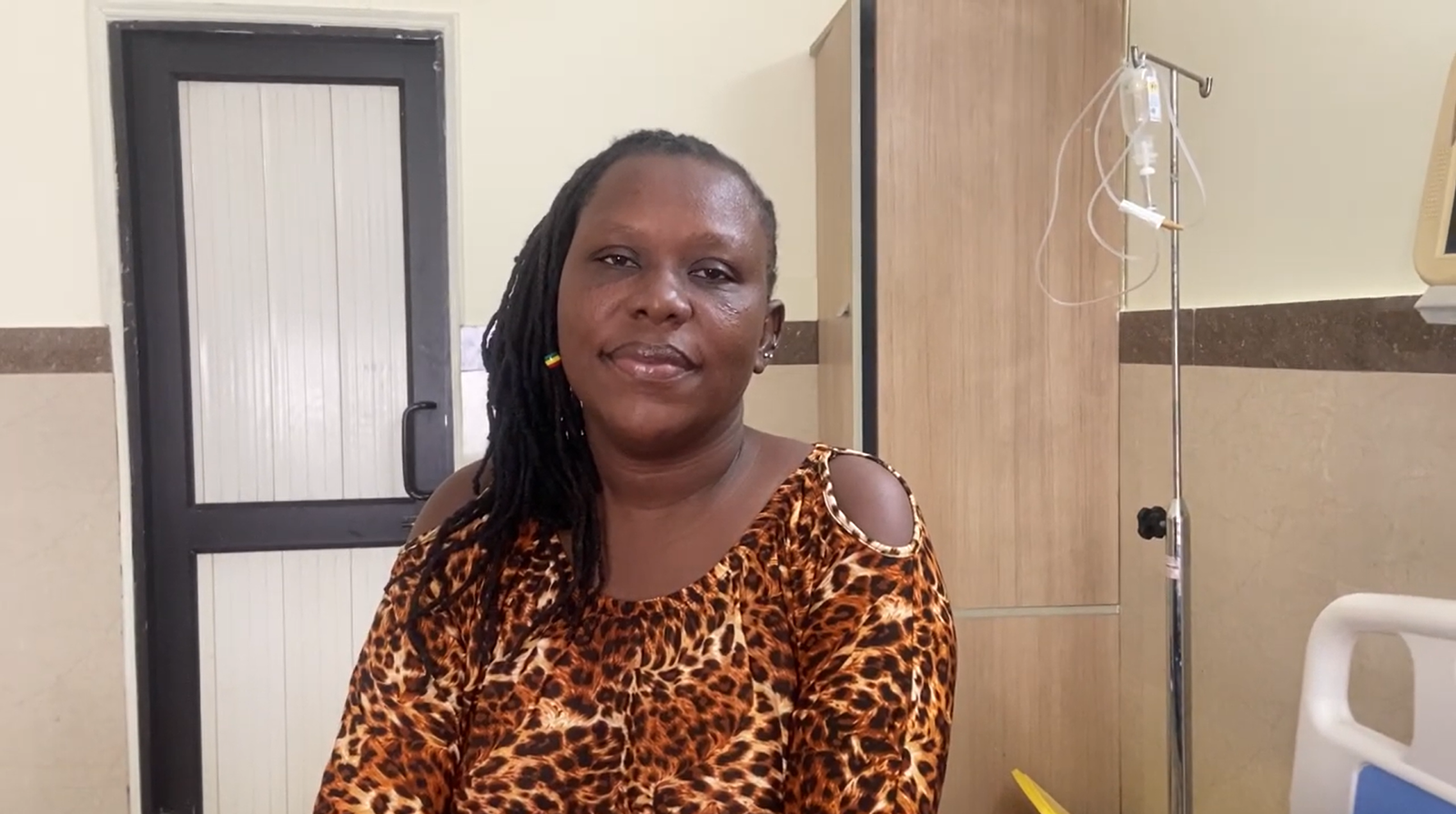
Stem cell therapy for infertility has given us renewed hope. The expertise and..Read More…
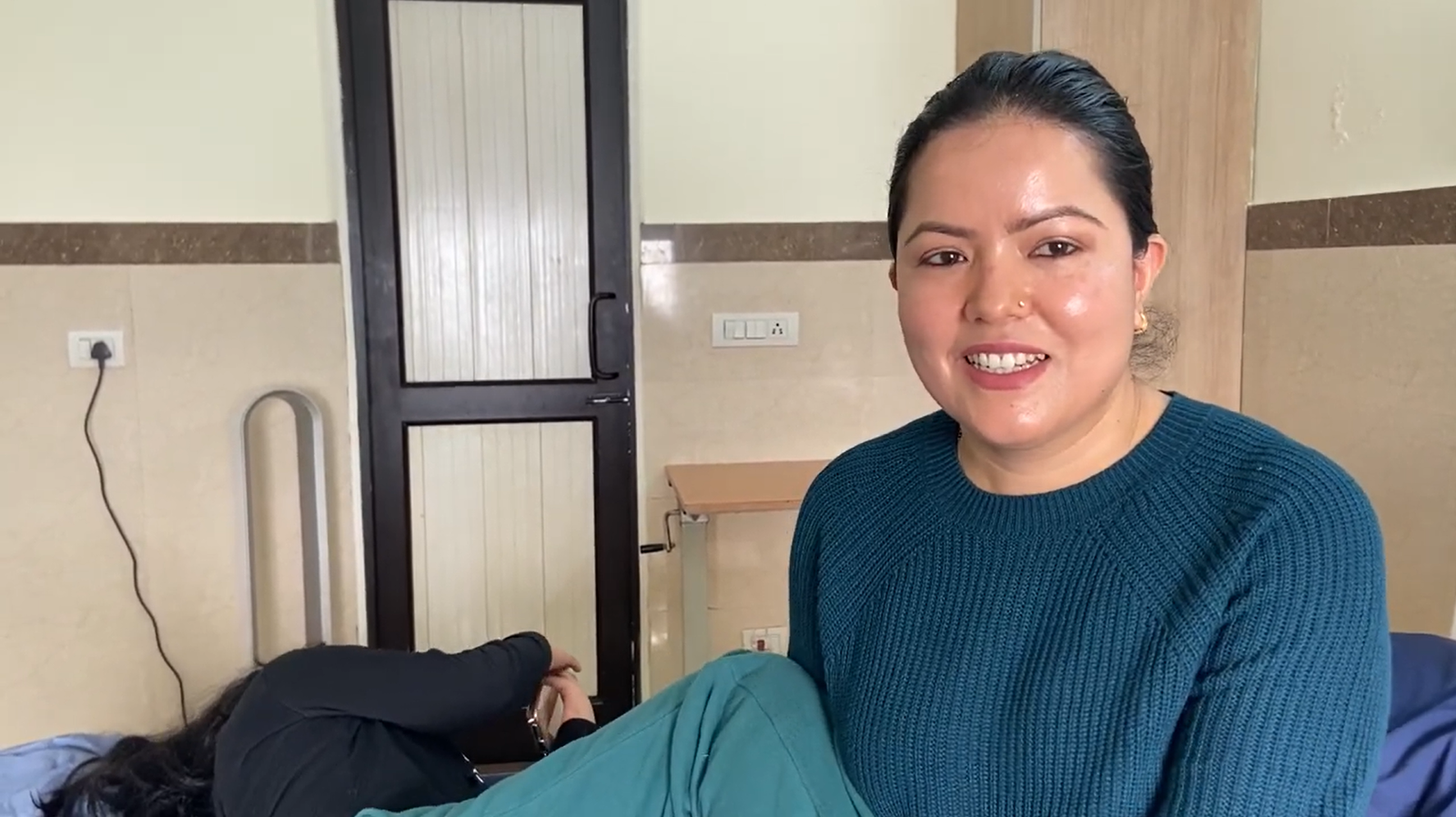
The stem cell treatment for my neurological disease ha.. Read More
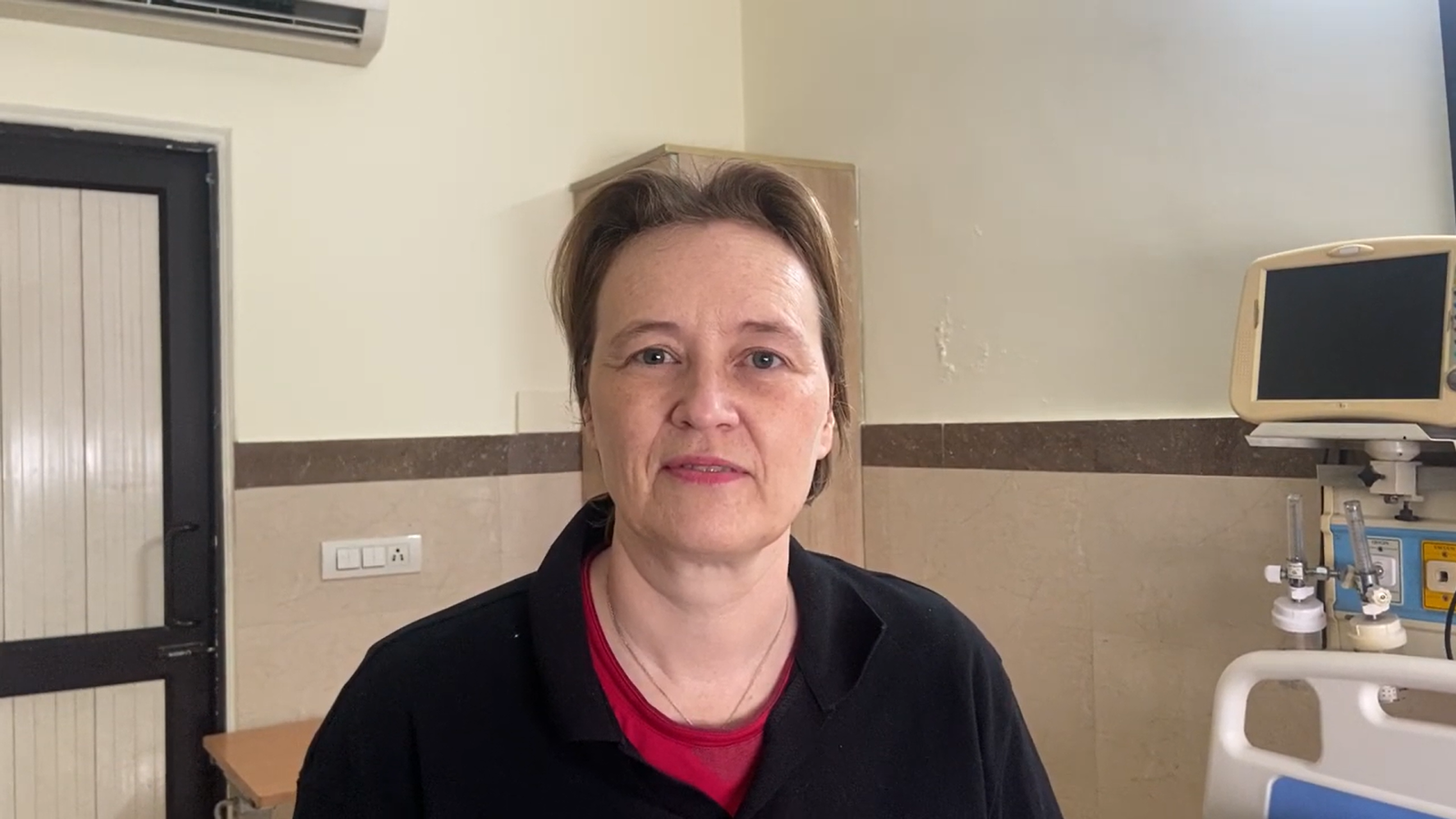
The stem cell treatment for my Chronic Fatigue Syndrome has been transformative… Read more….
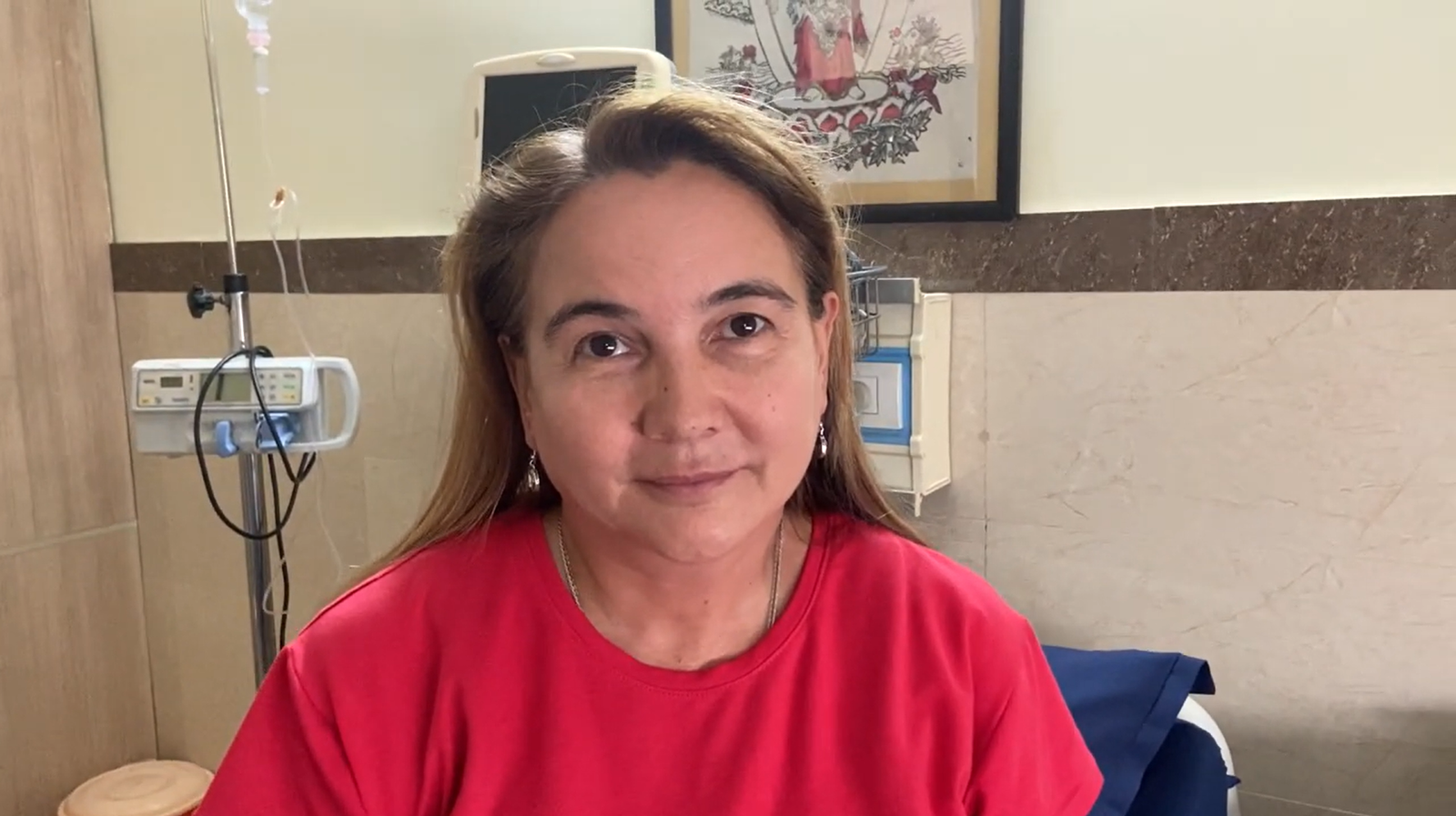
The expert care and attention I received have made managing my condition much easier.. Read
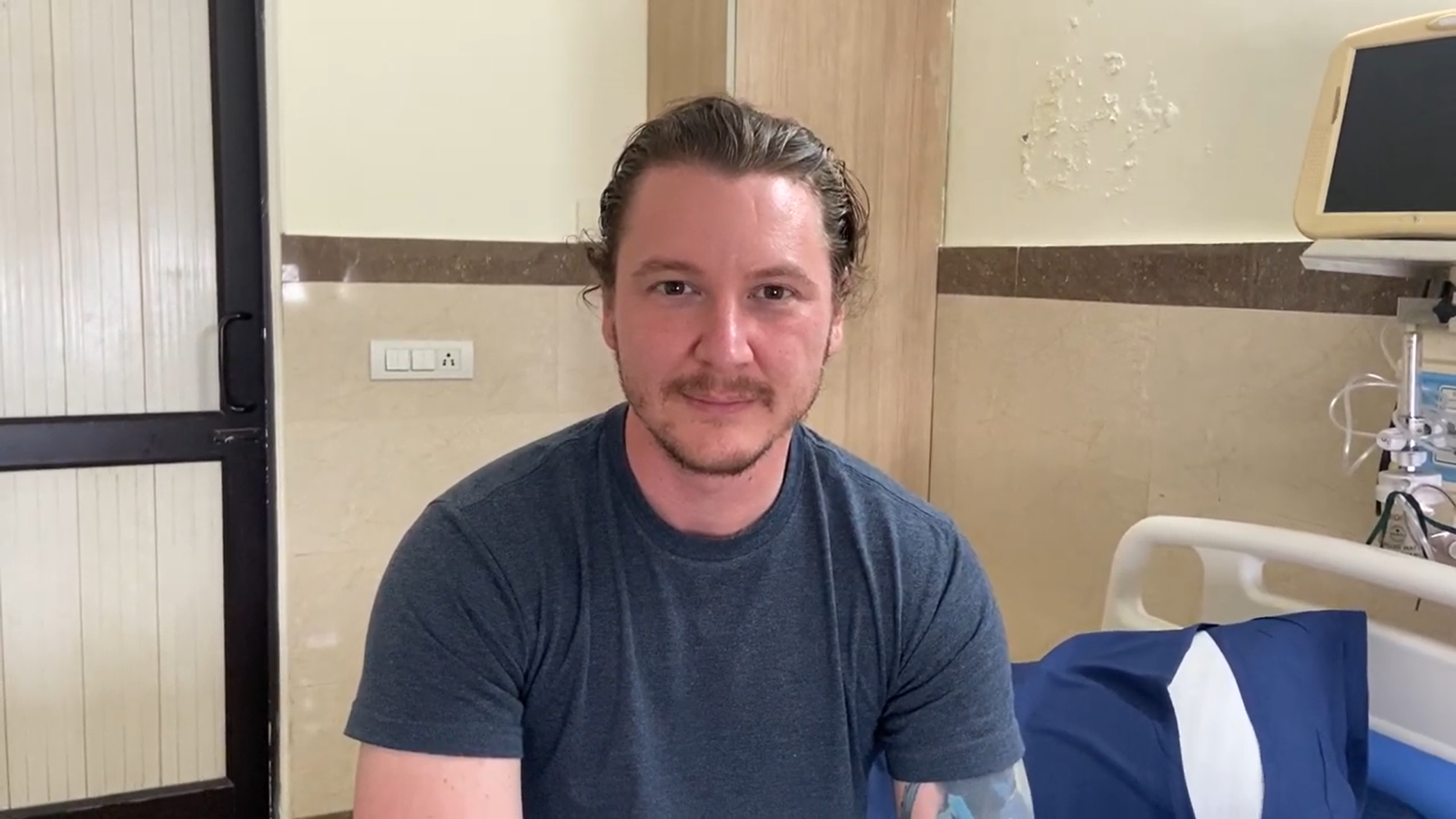
The stem cell treatment for my shoulder pain provided remarkable relief.. Read More…

(+91 ) 7827791242
(+91 ) 7827791242
info@globlaregenex.com
H-23/ B Abul Fazal Enclave, New Delhi - 110025, INDIA